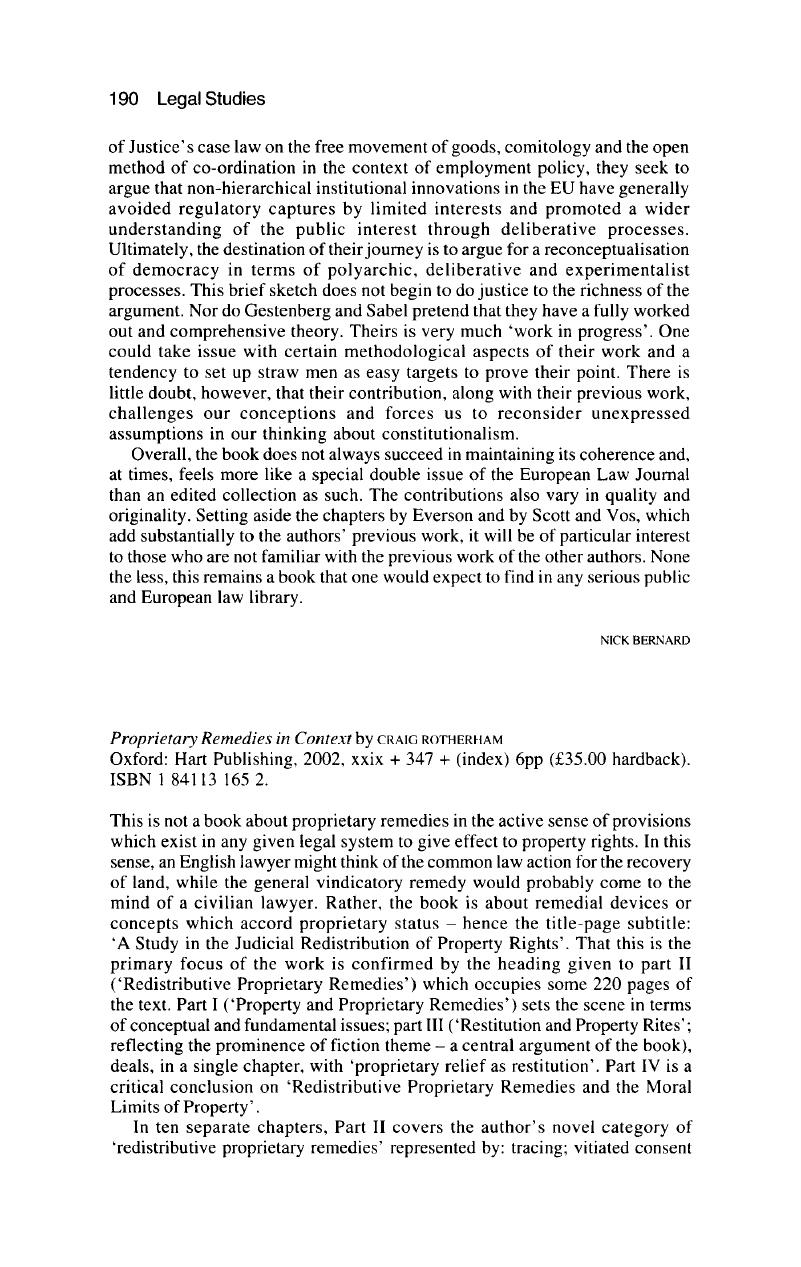No CrossRef data available.
Published online by Cambridge University Press: 02 January 2018

1. By way of contrasting approach, see Gretton, G ‘Proprietary Issues’ in Johnston, D and Zimmermann, R (eds) Unjustified Enrichment: Key Issues in Comparative Perspective (Cambridge: Cambridge University Press, 2002) p 571.CrossRefGoogle Scholar
2. William Swadling, in the introduction to his chapter ‘Property: General Principles’ in Birks, P (ed) English Private Law (Oxford, Oxford University Press, 2000)Google Scholar ch I, para 4.25, under the heading ‘Recognized rights in novel situations’ observes that ‘It has sometimes been claimed that judges exercising their equitable jurisdiction have the power to raise and thus reallocate property rights in situations where the settled rules of property say that the claimant has no such right’, but concludes that in both law and equity it is ‘a matter of the application of established rules to facts, not a question of discretion’.
3. Smits, J The Making of European Private Law (Antwerp: Intersentia, 2002) p 256 Google Scholar.
4. The well known-maxim is stated on p 127 to be based on the premise that property will only pass when the owner intends this, but surely entitlement to transfer and the intention to do so are entirely distinct, and the rationale of nemo dat is simply that the precondition to passing title is having title.
5. Sale of Goods Act 1979, s 21(1).
6. Sir Robert Megany and P V Baker (eds) Snell's Principles of Equity (London: Sweet & Maxwell, 27th edn, 1978) p 527.
7. Citing Hart, H L A The Concept of Law (Oxford: Clarendon Press, 1960) p 27.Google Scholar
8. ‘The efficacy of substitution in raising proprietary rights in the substitute depends on the establishment of a proprietary base at the first link of the chain, not on the nature of the facts relied on to establish that proprietary base’: P Birks and C Mitchell ‘Unjust Enrichment’ in Birks, n 2 above, ch II, para 15.190.
9. Hohfeld's famous little posthumous book lacks an index and my research has not uncovered material directly in point, but Hohfeld does note that ‘[n]umberless additional instances might be given of the use of the term “right”, where the legal quantity involved is really a power…’: see Hohfeld, W N Fundamental Legal Conceptions (ed Cook, WW) (New Haven: Yale UP, 1919 Google Scholar, reprinted 1964 with foreword by A L Corbin) p 51 n 65.
10. See van Vliet, L P W Transfer of Movables in German, French, English and Dutch Law (Nijmegen: Ars Aequi Libri, 2000)Google Scholar paras 24–5 and 111–4.
11. Would English lawyers want Scots law's simple but predictable model? Ironically, Scots property law remains uncertain of itself some five years after a House of Lords decision put into question its position on a fundamental matter involving the predictability/justice equation: see Sharp v Thomson 1997 SLT 636.